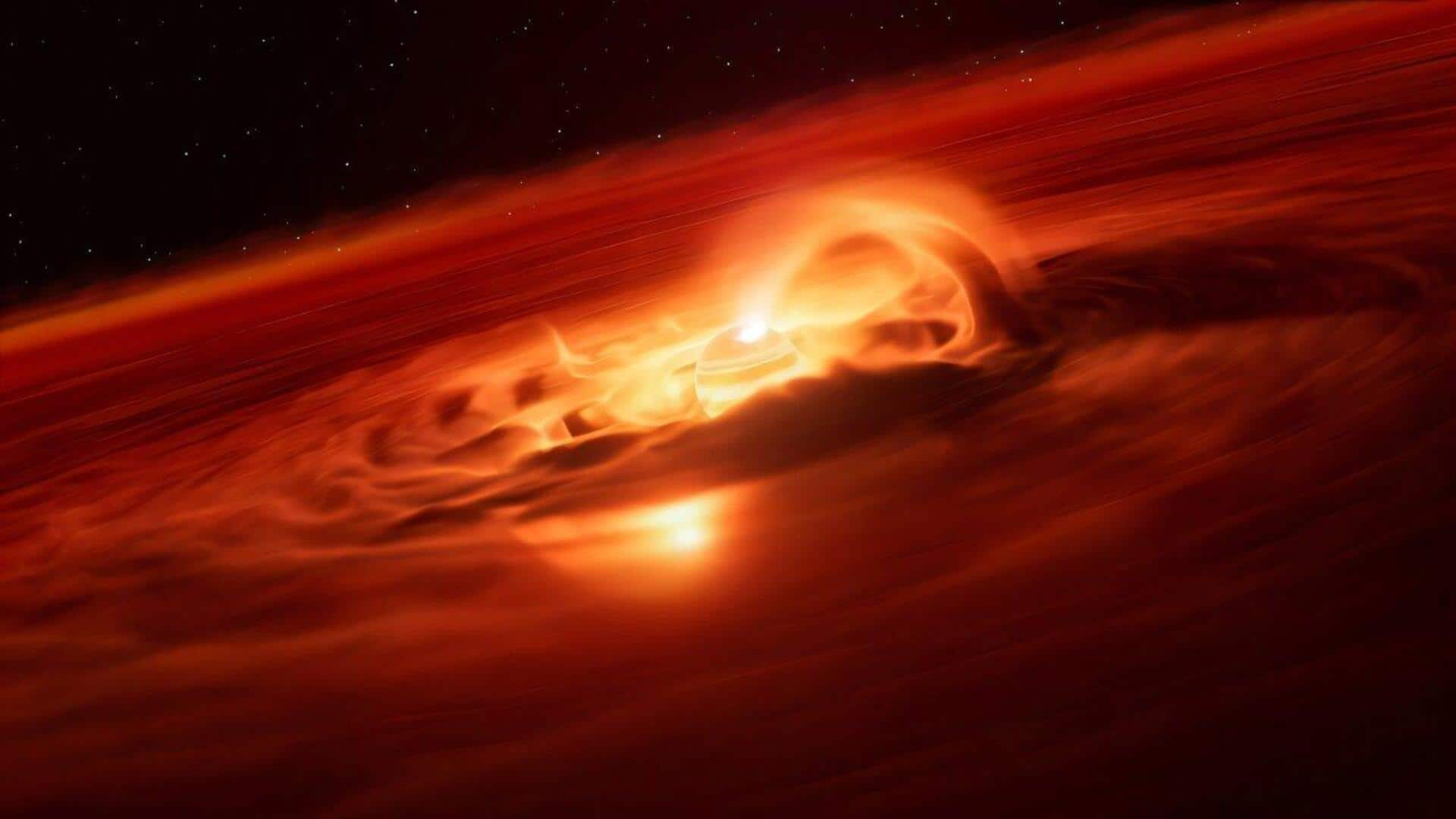
Astronomers discover planet that 'eats' matter like a star
What's the story
Astronomers have discovered a strange "rogue" planet that is consuming matter at an unprecedented rate. The planet, dubbed Cha 1107-7626, is located some 620 light-years away in the constellation Chamaeleon. It consumes six billion tons of gas and dust every second, an astonishing rate that blurs the line between planets and stars.
Cosmic nomads
What are rogue planets?
Rogue planets are unique celestial bodies that don't orbit a star like Earth and other planets in our solar system. Instead, they drift freely through the universe. Scientists estimate there could be trillions of these rogue planets in our galaxy alone, but spotting them is difficult as they mostly drift quietly along in perpetual night.
Celestial anomaly
Planet blurs line between stars and planets
The discovery of Cha 1107-7626's unprecedented growth spurt has left scientists baffled. The planet has a mass five to 10 times bigger than Jupiter and is still in its infancy, being just one or two million years old. It grows by sucking in matter from a surrounding disk, a process called accretion.
Accretion spike
Record-breaking accretion episode
In August, Cha 1107-7626 started devouring matter from its disk at a record-breaking six billion tons per second, eight times faster than a few months earlier. This is the strongest accretion episode ever recorded for a planetary-mass object. By comparing light emitted before and during this binge-eating session, scientists found that magnetic activity was driving matter toward the object, a phenomenon previously only observed in stars.
Chemical change
Growth episodes
The chemistry in the disk surrounding Cha 1107-7626 also changed during its accretion episode. Water vapor was detected in the disk during this time, but not beforehand. This is something that has been observed in stars but never for a forming planet. The discovery suggests some objects comparable to giant planets form like stars, from contracting clouds of gas and dust accompanied by disks of their own, and undergo growth episodes just like newborn stars.
Cosmic evolution
What does this mean for our understanding of planets?
Despite its strange behavior, Cha 1107-7626 is expected to have similar characteristics to huge planets due to its size. However, unlike stars, it is not massive enough to ever have fusion reactions in the core. This means that like other planets, it will cool inevitably as it gets older. The finding of this rogue planet invites us to wonder what worlds beyond our own could be like during their nascent stages.